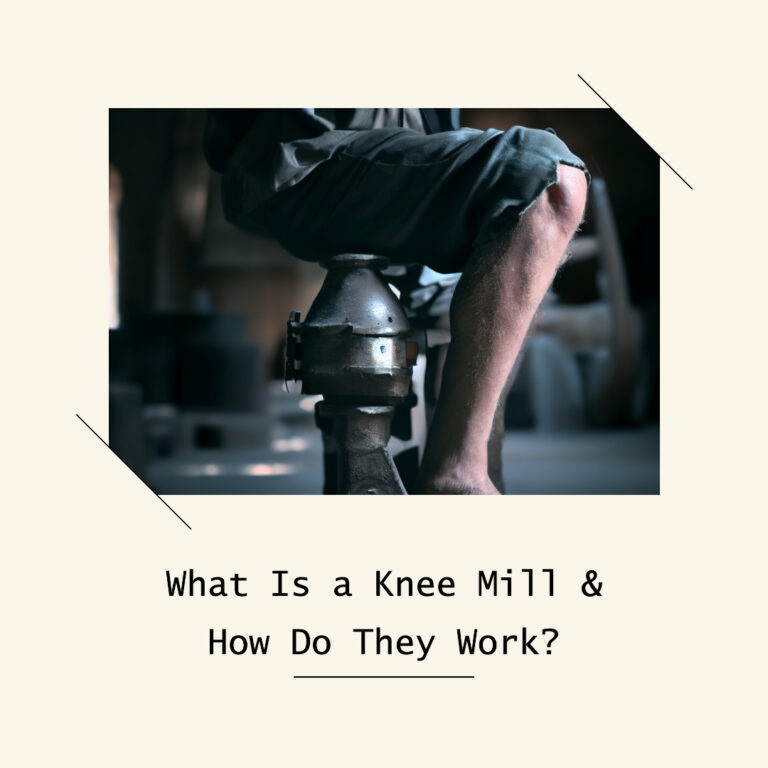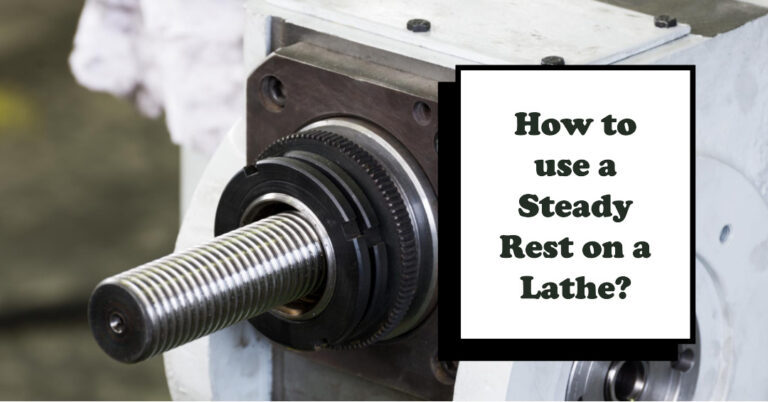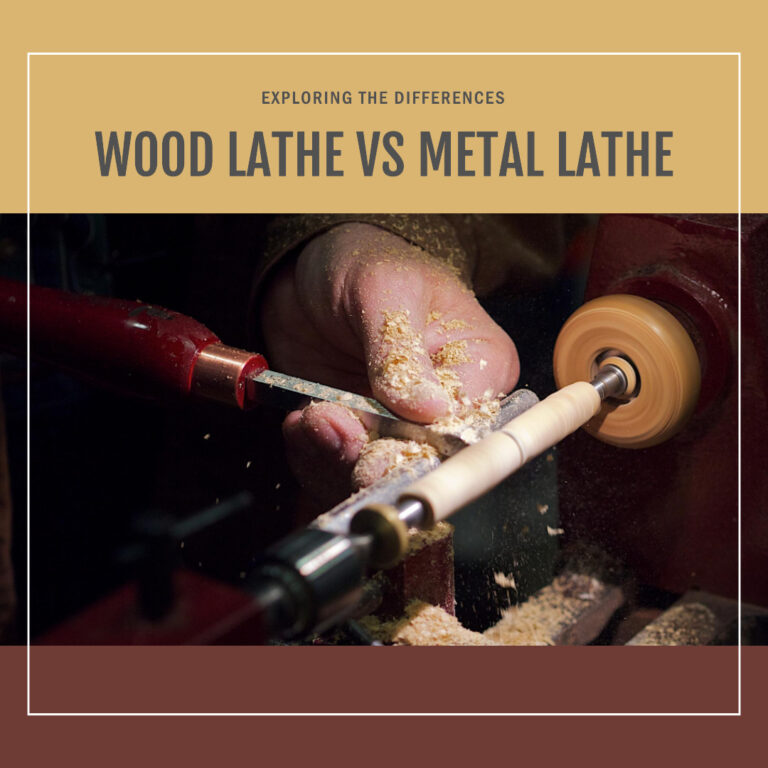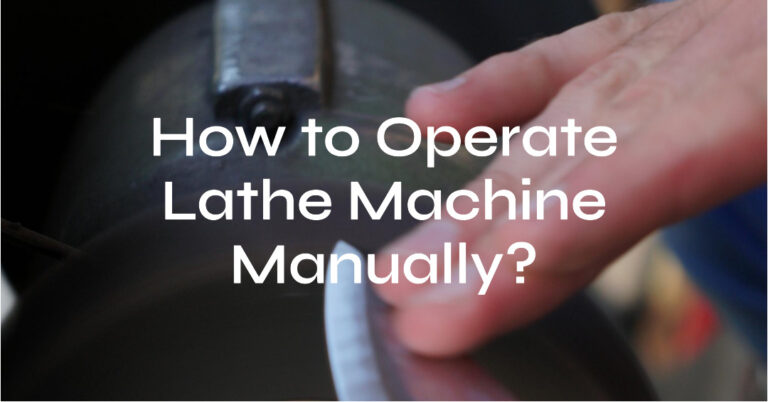7 Parts of a Lathe: Working Explained

If you’ve ever been captivated by the precision and artistry involved in crafting items like furniture legs or car parts, you’ve witnessed the magic of a lathe.
In the following paragraphs, we’ll delve into the world of lathes. We’ll explain what a lathe machine is, its evolution, and its various components. By the end, you’ll have a deeper appreciation for its ingenuity and a clear understanding of how it operates.
Introduction of Lathe Machine
So, you may be asking, “What’s so special about a lathe machine?” The lathe machine is the unsung hero in manufacturing and hobbyist workshops.
It’s the go-to equipment for various tasks, from creating simple objects like candlestick holders to complex components for aerospace technology.
The beauty of a lathe lies in its ability to transform raw materials like metal, wood, or plastic into something practical, beautiful, or downright innovative.
Definition of Lathe Machine
If you’re looking for a textbook definition, a lathe machine is a tool that rotates a workpiece on its axis to perform tasks like cutting, sanding, drilling, and turning, among others. Let’s break it down a bit more.
Imagine a potter’s wheel, but instead of clay, you have metal or wood; instead of your hands, you have a set of specialized tools.
The lathe machine holds the material and spins it rapidly while the operator maneuvers cutting tools to shape the object. It’s like sculpting but with more precision and control.
History and Evolution of Lathe
Centuries ago, the earliest lathes were basic, operated by two individuals for woodturning. One person rotated the workpiece with a rope while the other cut the wood with a sharp tool.
During the Industrial Revolution, lathes underwent a significant transformation. Steam power and later electricity revolutionized their capabilities. Today, we have a wide range of lathes, from simple wood lathes in hobbyists’ garages to advanced CNC lathes used in manufacturing.
It’s remarkable how this machine, with humble beginnings, has become vital in modern production, showcasing human innovation in problem-solving and enhancing our lives.
Different Parts of Lathe Machine and Their Functions
Understanding a lathe machine is similar to understanding a musical instrument. Just like you need to know the difference between a fret and a bridge to rock a guitar, understanding the different parts of a lathe will help you master the art of machining. Let’s break it down piece by piece.
1. Headstock
The headstock is the powerhouse of the lathe, located at one end of the machine. This is where the magic of rotation happens. It houses the central spindle and the mechanism to change its speed.
The main spindle is often hollow to allow long workpiece to pass through. Consider the headstock as the “engine” driving the lathe. If the lathe were a car, this would be under the hood.
2. Tailstock
Located opposite the headstock, the tailstock plays a crucial role. It supports the opposite end of your workpiece, keeping it steady while the headstock works its magic.
The tailstock is adjustable along the lathe bed to accommodate various material lengths. If you’re engaging in drilling operations, this is where you’ll set up your drill bits.
3. Bed
The bed is the backbone of the lathe machine. It’s a long, horizontal structure that supports all the other significant components, like the headstock, tailstock, and carriage.
The bed ensures that all the parts stay aligned, allowing for precise operations. Think of it as the foundation of a house; it needs to be stable for everything else to work smoothly.
4. Carriage
The carriage is where your cutting tools are mounted. It slides along the bed and can move parallel and perpendicular to the workpiece.
This movement allows you to cut the material to specific dimensions. You can adjust the cutting tools on the carriage manually or in more advanced machines through computer controls.
5. Tool Post and Compound Rest
Mounted on the carriage, the tool post holds the cutting tools and can be rotated to change the tool’s position.
The compound rest sits underneath the tool post and allows for finer adjustments in the tool’s angle and position. They allow you to make precise cuts, angles, and other shapes.
6. Lead Screw and Feed Rod
These two long rods run parallel to the bed and control the movement of the carriage. The lead screw is used mainly for thread cutting, while the feed rod controls the speed of the carriage during other operations.
They’re like the “navigational system” guiding your carriage to the correct locations along the workpiece.
7. Chuck
Last but not least, the chuck holds your workpiece in place. Usually attached to the central spindle on the headstock, it can have three or four jaws, depending on what you’re working on.
The chuck is crucial for ensuring the material stays stable during operations, making it a key player in achieving that precision we all strive for.
Working Principle of the Lathe Machine
Simply put, a lathe’s job is to shape and size a workpiece by removing material. When you start the machine, the headstock spins the workpiece rapidly, while your cutting tools, on the carriage, gradually remove material.
The tailstock ensures stability, preventing any wobbling or breakage. It’s like precision sculpting for industrial tasks.
With different movements and adjustments, you can cut, drill, knurl, or sand your workpiece into its final form.
Conclusion
We’ve gone on quite a journey, haven’t we? From understanding what a lathe machine is to its historical roots and, finally, to the different parts that make it work, it’s clear why lathes are crucial to industrial and hobbyist endeavors.
Mastering the parts of a lathe is not just a technical skill but a form of artistry. Whether crafting fine furniture or developing components for a rocket ship, the lathe is your canvas, and its parts are your brushes.
Frequently Asked Questions
What Are The Main Parts Of a Lathe?
The main parts of a lathe are the headstock, tailstock, bed, carriage, tool post, compound rest, lead screw, feed rod, and chuck. Each has a unique function that contributes to the machine’s overall performance.
What Are The 6 Major Components Of The Lathe?
The six primary components of a lathe are the headstock, tailstock, bed, carriage, lead screw, and feed rod. These essential components work together to ensure precise and efficient machining.
Which Tool Is Used In Lathe Machine?
Various tools can be used in a lathe machine, depending on what you’re trying to achieve. Standard tools include turning tools, threading tools, and boring tools. The choice of instrument depends on the material you’re working with and the specific type of operation you’re performing.






